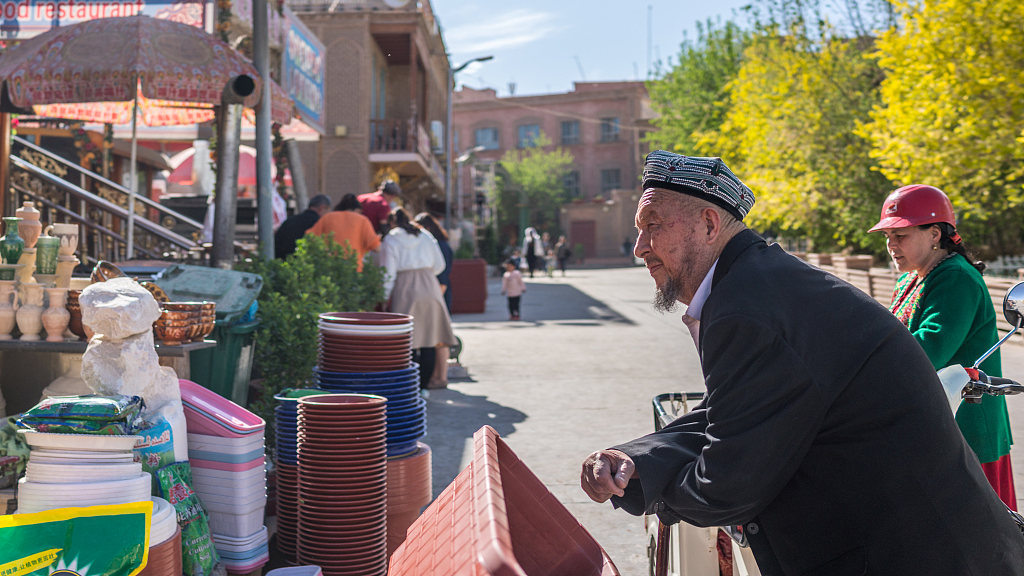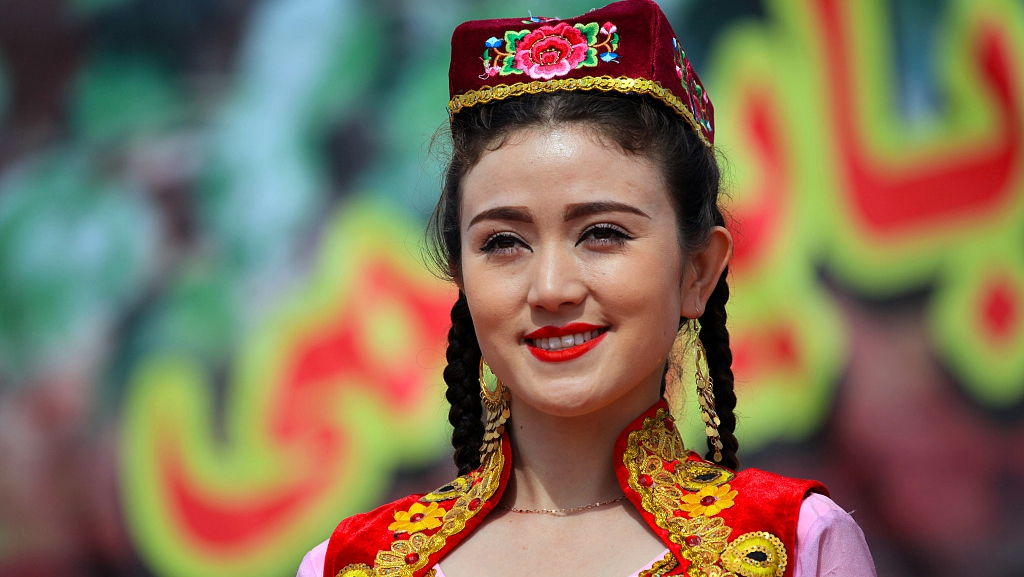
A resident asks about the price of goods in Kashgar, northwest China's Xinjiang Uygur Autonomous Region, April 12, 2019. /VCG
A resident asks about the price of goods in Kashgar, northwest China's Xinjiang Uygur Autonomous Region, April 12, 2019. /VCG
Editor's note: Keith Lamb is a University of Oxford graduate with an MSc degree in Contemporary Chinese Studies. His primary research interests are China's international relations and "socialism with Chinese characteristics." The article reflects the author's opinions and not necessarily the views of CGTN.
Though you'll never read about it in the Western press, more Uygurs than ever are attending university. As reported in my previous article, my own experiences and national statistics confirm this.
While statistics don't tell the whole story, they do demonstrate that the central government is working to address inequality, which is crucial for China's efforts to reduce poverty and develop China comprehensively.
Equally important is access to healthcare. Poor healthcare access can ruin lives, and expensive healthcare can bankrupt. A 2016 World Health Organization (WHO) report, which examined China's 2009 health reforms, found that China had expanded its health infrastructure and continued to promote equal access to basic health services.
Nevertheless, while China has achieved a near basic universal healthcare system, much remains to be done. The Healthy China 2030 blueprint aims to raise health standards by developing the healthcare industry and reducing the private costs of healthcare paid for by individuals. This year, in an effort to improve China's medical system and reduce health costs, China carried forward bulk buying to slash medical prices.
From reading the Western press, one would imagine that Uygurs are locked out of these healthcare reforms. However, the "China Ethnic Statistical Yearbook 2014 to 2020" figures show that the health reforms taking place in China are also taking place for the Uygur ethnic group, and they, like in education, enjoy some benefits.
The number of medical technicians per 1,000 has gone up in Uygur areas from 5.92 to 7.09, and the number of doctors per 1,000 has increased from 2.25 to 2.55. This compares favorably to the national average, which rose from 1.82 to 2.59 doctors.
The amount of medical technicians in Uygur areas is relatively high compared to other ethnic minorities. For example, the Monba ethnic group has 5.63, and the Han people have 6.79 medical staff per 1,000.
Considering that many Uygurs live in remote rural areas, it is important that medical facilities are close at hand as traveling to a city can be a long, arduous journey. It is gratifying to see that figures show that 99.97 percent of Uygur villages had a medical clinic in 2020, which fares well compared to the national average of 94 percent and the Han ethnic average of 94.98 percent.

A Uygur girl during a dance performance, May 21, 2016. /VCG
A Uygur girl during a dance performance, May 21, 2016. /VCG
With Xinjiang being so sparsely populated, it becomes even more important that rural medical institutions have beds. Again, the statistics show that in Uygur rural areas, medical facilities have 7.1 beds for every 1,000 people, whereas the national average is 4.56.
Zooming in on spending in Xinjiang, a study by the National Natural Science Foundation of China showed that there had been an almost eight-fold increase in medical expenditure in parts of Southern Xinjiang. Spending on township hospitals had increased from 24.4 million yuan (about $3.78 million) to over 7.33 billion yuan (about $1.14 billion) from 2009 to 2018.
Annual growth in healthcare spending in Xinjiang increased by 28.96 percent on average, far higher than the annual growth rate of 13.16 percent. This spike in healthcare spending has been an incredibly important push, as overall development and healthcare had been lagging behind Eastern China up until recently.
Nevertheless, there is still much to improve on. Undoubtedly, the statistics show that Xinjiang is quickly catching up, but the sheer remoteness of the area and the later start on the road to development means that much needs to be done.
Probably, the most important fact from the National Natural Science Foundation of China study, and largely unknown to the outside world, is that the neediest in Xinjiang already receive beneficial healthcare coverage.
The report finds that much of the spending on healthcare was due to "a large number of farmers and herdsmen in Xinjiang, whose medical insurance reimbursement ratio was much higher than that of the general population." Also, "a series of medical insurance reimbursement policies for the elderly issued by the Autonomous Region government has improved the reimbursement ratio of the elderly."
(If you want to contribute and have specific expertise, please contact us at opinions@cgtn.com.)

